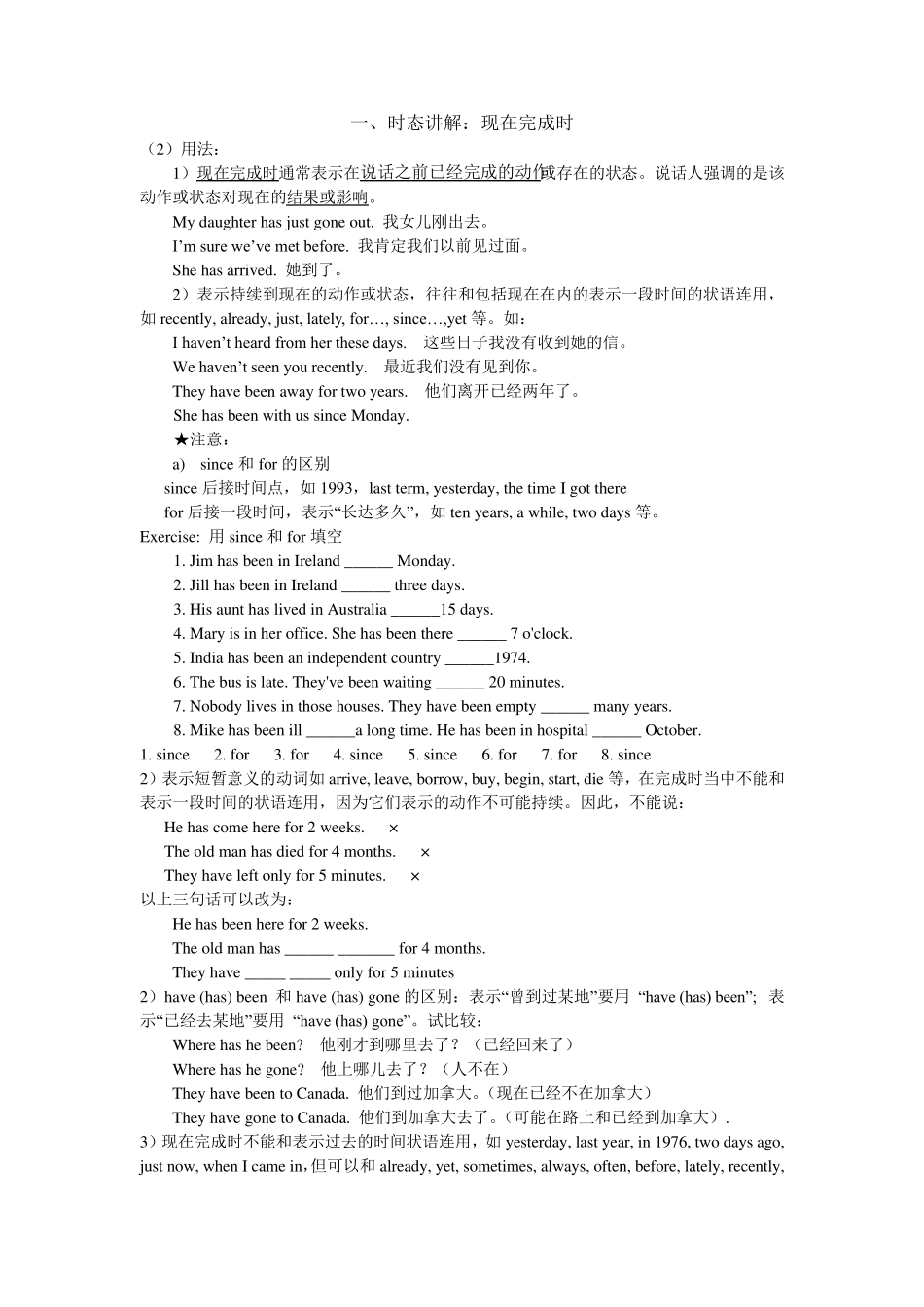一、时态讲解:现在完成时 (2)用法: 1)现在完成时通常表示在说话之前已经完成的动作或存在的状态。说话人强调的是该动作或状态对现在的结果或影响。 My daughter has just gone out. 我女儿刚出去。 I’m sure we’ve met before. 我肯定我们以前见过面。 She has arrived. 她到了。 2)表示持续到现在的动作或状态,往往和包括现在在内的表示一段时间的状语连用,如recently, already, just, lately, for…, since…,yet 等。如: I haven’t heard from her these days. 这些日子我没有收到她的信。 We haven’t seen you recently. 最近我们没有见到你。 They have been away for two years. 他们离开已经两年了。 She has been with us since Monday. ★注意: a) since 和for 的区别 since 后接时间点,如1993,last term, yesterday, the time I got there for 后接一段时间,表示“长达多久”,如ten years, a while, two days 等。 Exercise: 用since 和for 填空 1. Jim has been in Ireland ______ Monday. 2. Jill has been in Ireland ______ three days. 3. His aunt has lived in Australia ______15 days. 4. Mary is in her office. She has been there ______ 7 o'clock. 5. India has been an independent country ______1974. 6. The bus is late. They've been waiting ______ 20 minutes. 7. Nobody lives in those houses. They have been empty ______ many years. 8. Mike has been ill ______a long time. He has been in hospital ______ October. 1. since 2. for 3. for 4. since 5. since 6. for 7. for 8. since 2)表示短暂意义的动词如arrive, leave, borrow, buy, begin, start, die 等,在完成时当中不能和表示一段时间的状语连用,因为它们表示的动作不可能持续。因此,不能说: He has come here for 2 weeks. × The old man has died for 4 months. × They have left only for 5 minutes. × 以上三句话可以改为: He has been here for 2 weeks. The old man has ______ _______ for 4 months. They have _____ _____ only for 5 minutes 2)...


